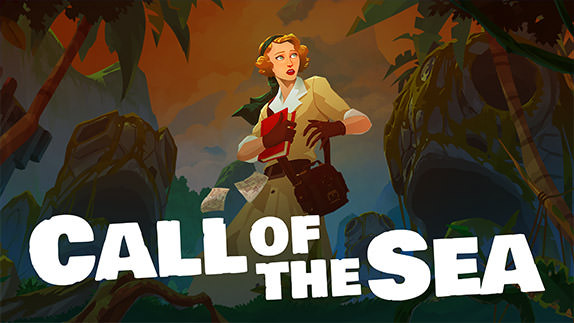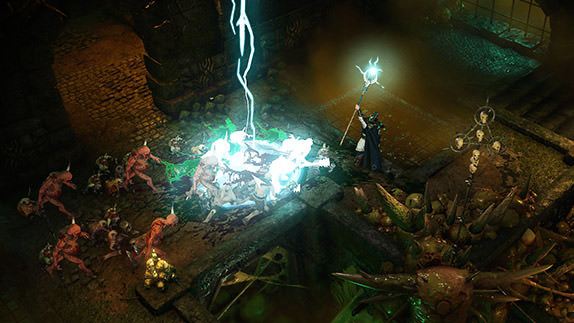Shiness: The Lightning Kingdom Review

 By Mike de Leon
Posted on April 19, 2017
By Mike de Leon
Posted on April 19, 2017
Considering we are less than six months into the start of 2017, and there have been many new entries into the action RPG genre. While some have come through established developers, releasing new entries into existing franchises, Shiness: The Lightning Kingdom is a new game that feels refreshing in a sea of sequels. Shiness was created by creative director Samir Rebib when he was just a boy, based on his love for Dragon Ball, Secret of Mana, and others. It’s not meant to be only a video game either, as publisher Focus Home Interactive shares this belief, releasing chapters of the manga for free on the official website. It contains a ton of backstory to the events that directly lead up to the beginning of the game.
The species living on Mahera were previously linked together harmoniously through a spiritual energy known of Shi, however as it began to dwindle, it led to an all-out war between the races. With the core of the planet destroyed, the Humans, Sheiks, and the Waki have rebuilt their civilizations now that they have been separated by the destruction of the world, doomed to live on celestial islands, called Meteoras. You take on the role of Chado and Poky, two young Waki adventurers, that end up crashing their rickety spaceship while searching for the mythical Land of Life. Chado happens to be the only one in the group that can communicate with Terra, a Shiness that guides you through the adventure.
Shiness: The Lightning Kingdom’s combat system feels unique, and skill-based at the same time. In fact, it’s impossible to grind in the game as once you reach a set level; you won’t be able to gain additional experience from weaker foes. This in itself makes Shiness a much more challenging game that balances your abilities with your enemies, requiring you to be on point with blocking, dodging, and parrying. Each character is tied to a particular affinity or Shi, representing water, fire, earth, and air. As you enter into a battle state, the immediate area becomes enclosed by a colored barrier. This barrier alternates between different types of Shi. For example, Poky uses water spells, and if the arena changes to blue, you can regenerate your Shi powers, allowing you to bombard enemies with water projectiles. As a strength, this works out in your favor, but it also can be a weakness as certain enemies can use Shi powers as well, exploiting character weaknesses.
Besides tossing spells at your foes, you will spend most of the time pulling off martial art combs using a wide variety of punches, kicks, flips and anything else you can think of. It’s a sheer joy to watch, giving off a big anime vibe. However, since the game transitions into real-time combat, there is no delay from when you encounter an enemy to when they began to pound away on you. In fact, even if you get the first hit in, I’ve died instantly from a single combo before realizing what has happened. On multiple occasions, combat began before I was able to react, as enemies were inflicting a ton of punishment immediately. You’ll learn to take a more defensive approach, but since the game lacks checkpoints, you’ll have to restart if all your characters fall in battle from your last save point. Save points are well placed throughout the map. However, you just need to ensure that you save at every opportunity
Once you gain additional characters for your party, you’ll be taught how to assign support skills, as combat is always a one on one affair. While you and even your foes can swap characters during fights, you also can assign various support roles. In doing so, you can set healing requirements, such as when a character's health is lower than 75%, but it can also be used for various buffs as well.
During exploration of the vibrant and colorful environments, you’ll come across puzzles that need to be solved using the unique abilities of each character. Poky can use his Shi wrench to take energy from crystals and link them together to activate previously deactivated ones. This could build a bridge, allowing you to access a previously unexplored area. Chado, on the other hand, can create solid rocks that can be placed on or thrown at switches or buttons. The boulders he creates can also break through damaged walls, revealing new hidden areas
On the downside, the game’s camera can be a hindrance, especially during combat. Even within the first couple hours, the camera frequently would get stuck, or be in the wrong position, blocking key moments in fights. Considering how fast you can lose by mistiming a single block or parry, this is quite an annoyance. Many of the game’s characters are anthropomorphic (and furry) in nature, and while I wouldn’t hold that against the game, I know there are some that are heavily against the concept for a handful of different reasons. On multiple occasions, I’ve had fights end prematurely, even though there were multiple enemies nearby. Instead of transitioning to the next one, the fight ended, and immediately started back up, but only after I was unable to respond to being attacked.
Simply Put
Samir Rebib’s journey of seeing his childhood creation come to life has to be a dream come true, and even though Shiness: The Lightning Kingdom has its problems, this indie action RPG is a lot of fun. Dungeons are quite expansive, featuring unique boss encounters that go beyond simply mashing buttons. They also serve to help flesh out the relationships between the characters, but it's just a shame there aren’t more of them.
Note: Shiness: The Lightning Kingdom was reviewed on PlayStation 4. A digital copy of the game was provided by the publisher/developer.




